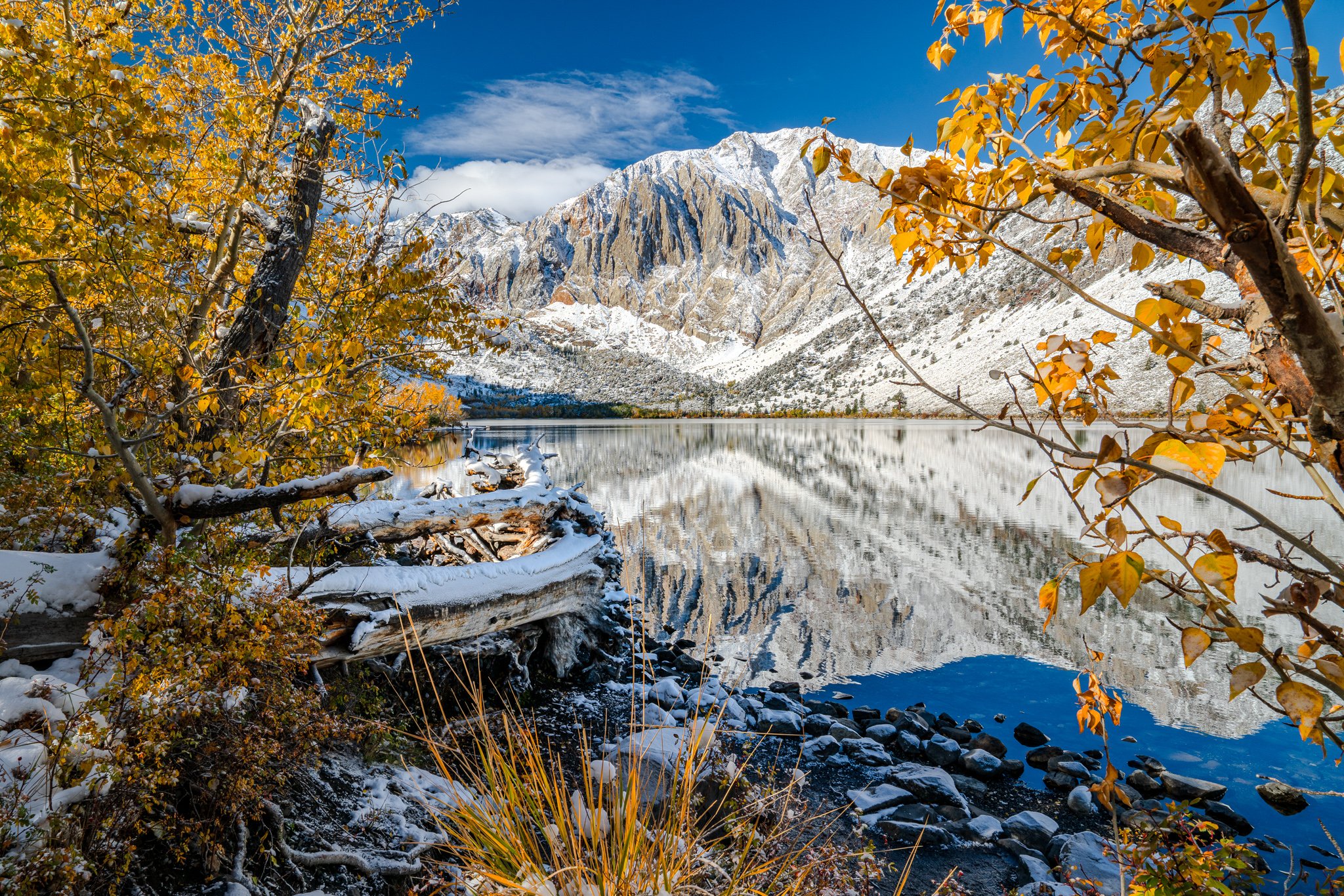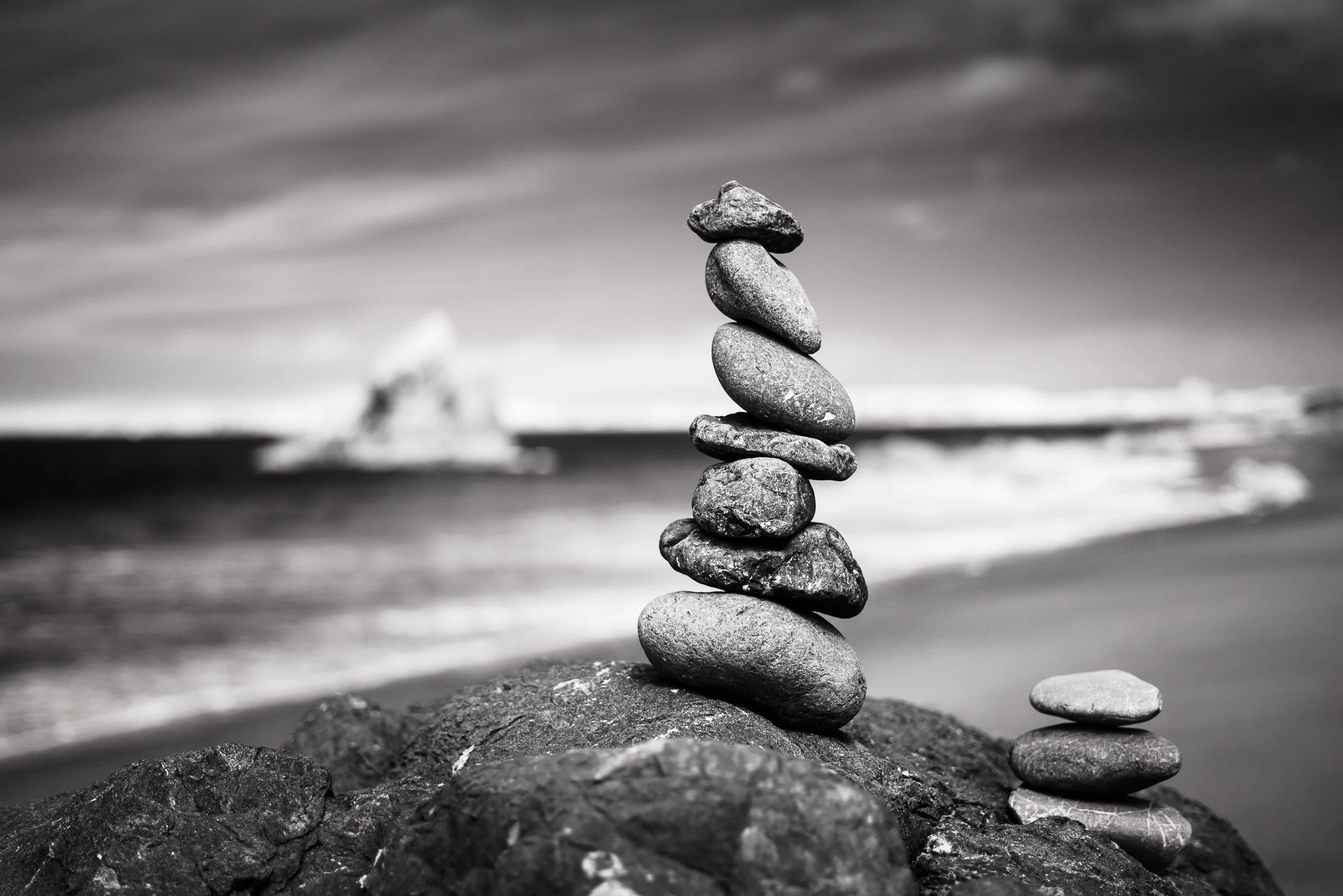Seeing Light in a Whole New Way: Lightroom’s HDR Editing
I’ve been editing photos for years. I’ve pushed pixels, tweaked curves, finessed masks. But seeing my images on a true HDR-capable display — tapping into Lightroom’s HDR editing on a single RAW file — has radically changed how I experience my work. This isn’t a new feature of Lightroom, but it’s new to me! Stepping into this relatively new HDR workflow has been eye-opening. And I’m excited about what it’s opening up for my photography.
The first images I processed in HDR on the monitor felt alive in a way SDR editing never could. The highlights hold detail I never thought possible. Shadows breathe. Tonal depth across a scene feels natural, yet richer. In October I captured a series of images at Convict Lake, with autumn color and fresh snow dusting the peaks and lake shores. The scene finally glows the way it did that morning.
Autumn Meets Winter, Convict Lake, California
Contact Scott to commission a license for this image.
This isn’t just for color photography. Black and white imagery has gained a new life, too. HDR editing preserves subtle tonal gradations in highlights and shadows that you usually have to choose between. Whites stay luminous without washing out, blacks maintain their depth, and midtones gain a lifelike punch. It’s fundamentally changed how I approach contrast and light in monochrome edits. Last month I had a mid-day drive through the Alabama Hills and the clouds jumped to life when switching to HDR editing.
Alabama Hills, California
Contact Scott to commission a license for this image.
As with any new feature and technology, there are some considerations and limitations. To enjoy an image with true high dynamic range, it must be viewed on a HDR-capable display. Thankfully, reasonably recent Samsung, Apple, Google, and other smart phones support displaying HDR-enabled images. For the photos in this article, I used Lightroom’s export options to enable HDR metadata. The JPEG, JPEG-XL, and/or AVIF formats (among others) can maintain the HDR metadata and present reasonable well on SDR displays, too. Without that additional information, HDR images viewed on SDR screens can look unappealing — details may look crushed or overblown.
Also, not all applications support displaying HDR-edited images, even with an HDR capable display. I’m happy that Instagram supports showing HDR images, making it a great place to showcase edits leveraging this technology. Another segment of applications that need HDR capability – photo editing plugins. Few fully support the broad HDR range. I’m eager for my favorites — ON1 and Luminar Neo — to support HDR-capable plugin workflows. Until then, the full potential of HDR edits is best realized directly inside the Lightroom/Photoshop ecosystem.
A limitation is getting an HDR-edited photo into the physical world. Printing an HDR edit? Well, that’s just not going to line up. Paper gamuts are smaller, typically smaller than SDR gamuts. Your HDR magic collapses and for prints, I’ll revert to my SDR editing styles. HDR editing is for on-screen storytelling.
Music Room, Bodie, California
Contact Scott to commission a license for this image.
What about YouTube tutorials, Scott? Well… that’s another challenge. While YouTube itself supports HDR video, the ScreenFlow software I’ve used for years to create my videos can’t capture the range of my HDR display. I’m exploring other software that can preserve HDR’s broader range. Though once produced, the splendor of HDR video is limited to HDR-capable display. I anticipate measured use of HDR video.
My workflow is adapting and changing. And it’s worth the extra effort. Seeing my own images this way — full highlight fidelity, richer shadows, more depth — is a quiet revolution. It’s not flashy or garish – this is not the HDR exposure blending and tone mapping of a decade ago. This HDR editing is sophisticated, subtle, powerful, and completely changes how light behaves in my edits. Stepping into this HDR world, a couple of years after it first became possible, feels like discovering details I didn’t know I’d been missing.
This is how images finally start to feel like the scene you remember.










